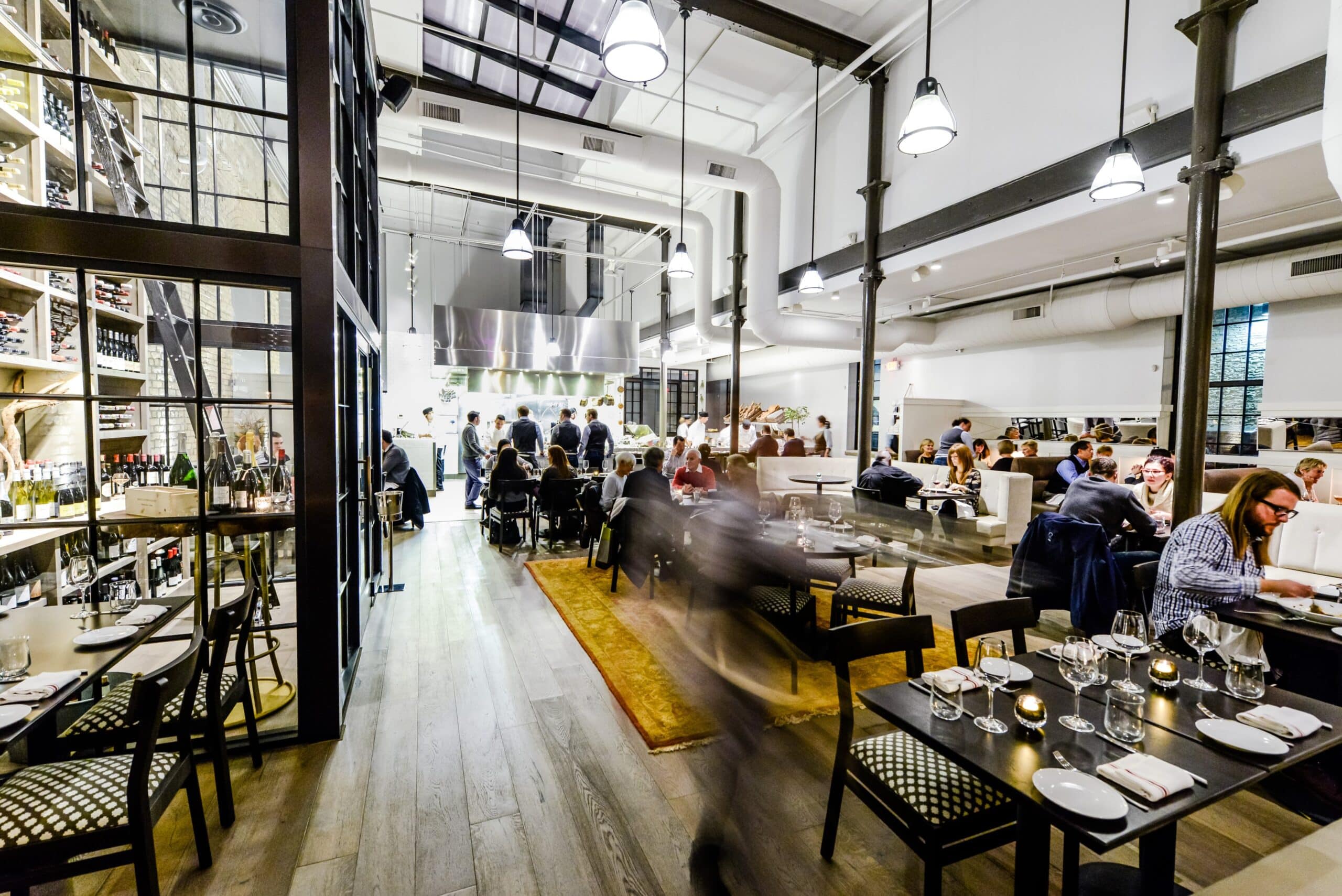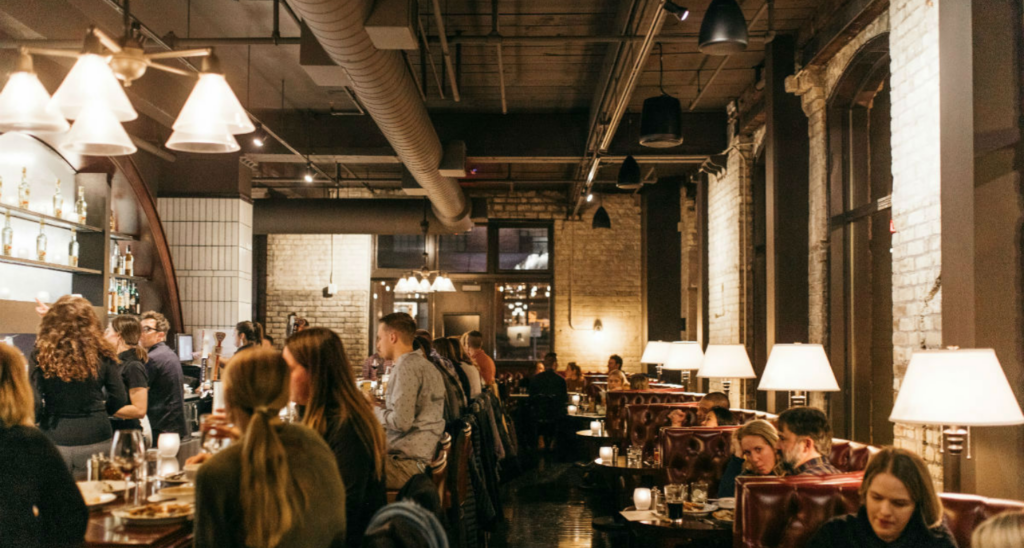Climate change. Sustainability. Adaptive re-use. Eco-friendly. What started as a mantra has become a worldwide ethos. Sustainability affects every industry, and design and architecture aren’t exceptions—in fact, design can be on the forefront of responsible environmental practices.
As architects and designers at Shea, we impact consumer spaces across the country, and we consider it our everyday responsibility to the planet to incorporate sustainable and green practices. Sustainability at its core is about keeping in mind the future environmental impact of what we use and how we use it. And green design is about embracing what can be done today to make the planet and its inhabitants happy and healthy.
For us, designing to LEED (Leadership in Energy and Environmental Design) standards and incorporating the most efficient HVAC and lighting systems is an absolute. But we consider it our duty as designers to constantly challenge ourselves with the question of “What else?” and “How can we creatively implement a reduce/reuse/recycle mindset?” The design of the future is all about making the most of the past.
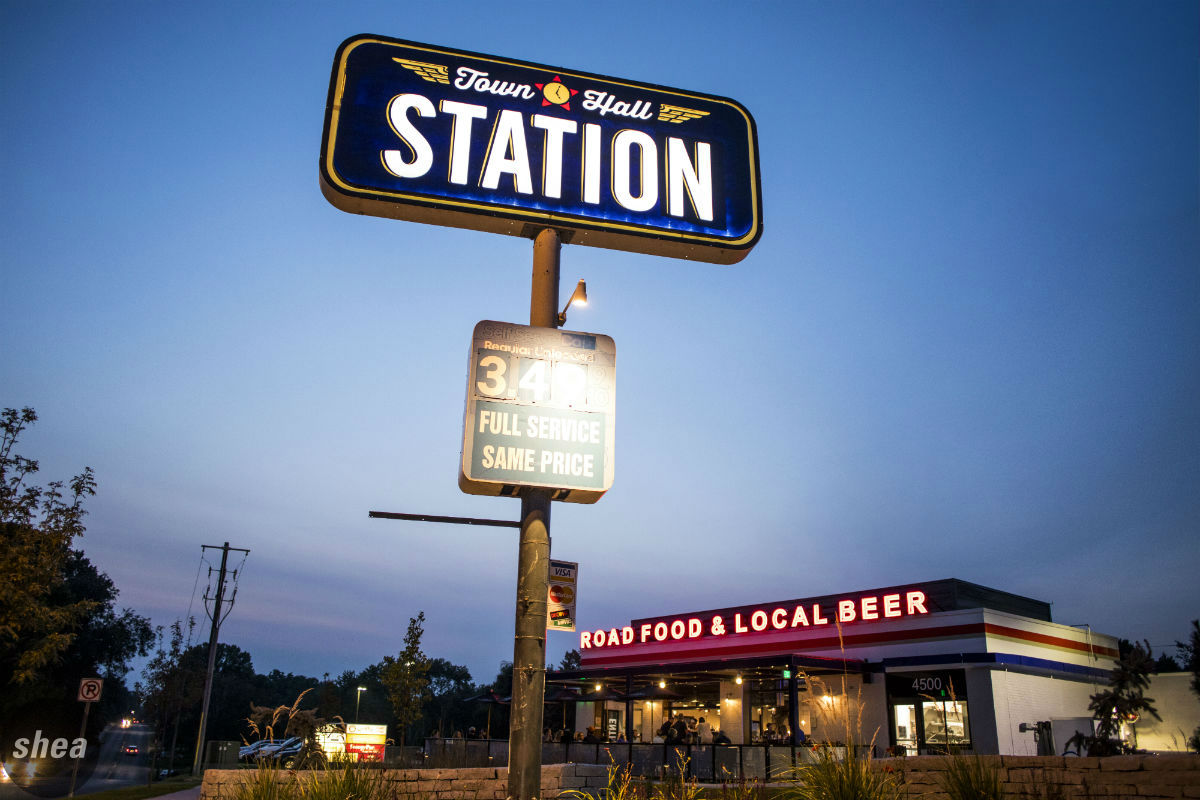 Adapting Second-Generation Spaces
Adapting Second-Generation Spaces
Adaptive reuse is one of the answers. Why knock a great building down or wipe a space clean when you can instead get creative with the reuse of a second-generation or historic space? And in that historic space, don’t even think about adding that drywall if it can be avoided—why remove or cover up the past when it can become an authentic cornerstone of the design? Office, hotel, or restaurants can be completely transformed without sacrificing their bones. The design may be more complicated up front, but that’s where the creative challenge comes in… And where dividends pay off.
At all-day Mexican fast-casual/market hybrid Vivir, Shea took what was already a historic building (a former glue factory) that had been adapted into a restaurant and gave it a fresh feel with simple, unexpected design details. By simply painting a custom print on the existing concrete floor and brightening up the space’s columns with white paint made a huge visual impact, and a great backdrop for the new menu and merchandise offered.
Former gas stations can be unrecognizably transformed into vibrant neighborhood bars and restaurants (see: Town Hall Station) and the coolest new office spaces (Clockwork).
New design darling Khaluna is a second-generation space in what was a dark neighborhood pub—talk about a transformation, where our team was able to keep the key infrastructure (the kitchen and bar) but bring a completely new brightness. South Minneapolis’ Petite Leon brought a new brand and personality to a corner Kingfield restaurant through a new Shea backbar design, refinished existing woods and bringing in custom wallcoverings, all in lieu of a total gut and keeping the primary elements in place.
And when Preston Kelly rebranded as Preston Spire, they moved to a 141-year-old former Minneapolis mill, with the goal of taking the utmost advantage of the historic space. Our design solutions used the historic brick walls and original flooring as a foundation, and we completed it by incorporating an abundance of natural light and biophilic elements to enhance that footing.
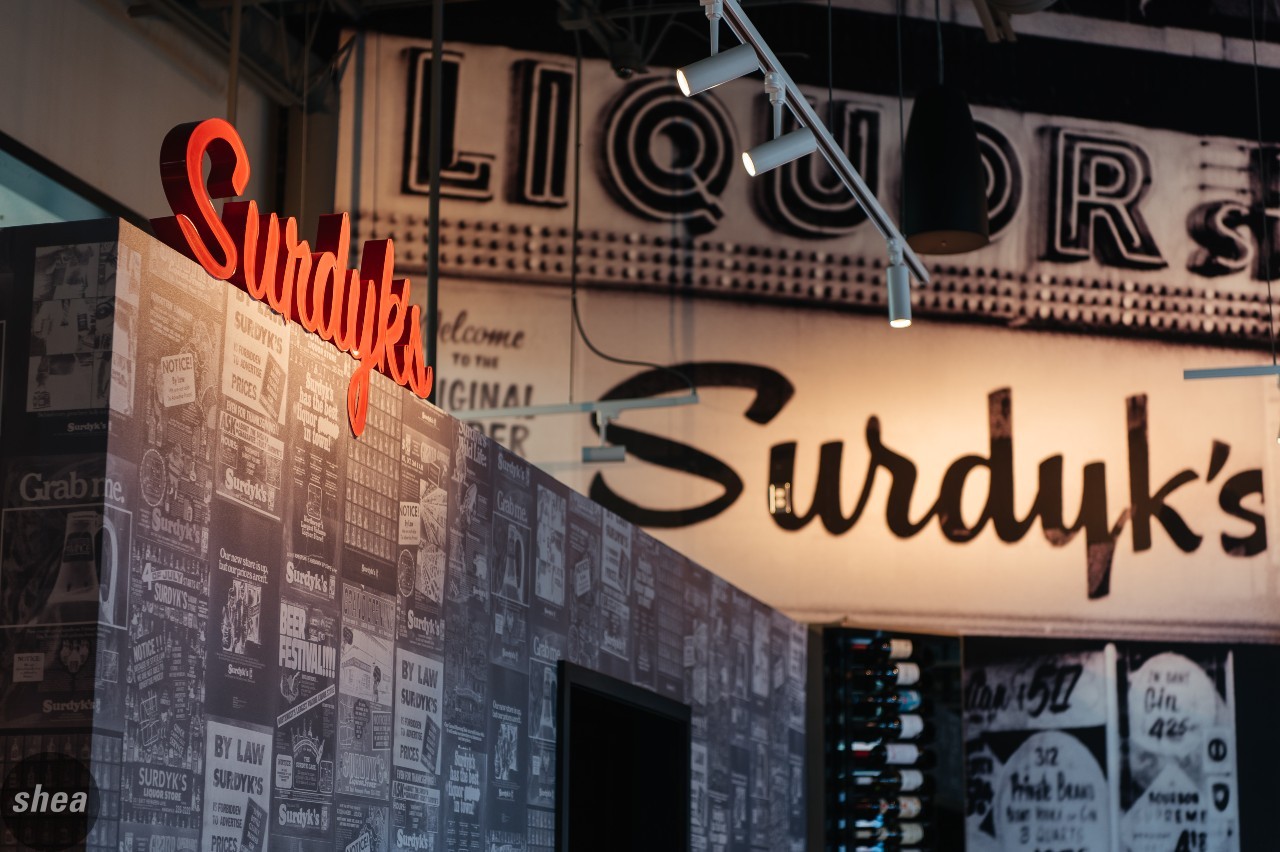 What’s Old is New Again
What’s Old is New Again
Our world is full of discarded items, and with boxes filling storage units. One of the primary design challenges that we give ourselves at Shea is to look to any authentic history in a brand or space, or a way to reuse discarded or found pieces into standout design features that add to the experience. The perfect example? Old newspaper advertisements and press for the 1930s-era Surdyk’s liquor store in Northeast Minneapolis, which our team converted into a wallcovering that has become iconic in the new attached Sidebar restaurant (along with one of the store’s vintage signs).
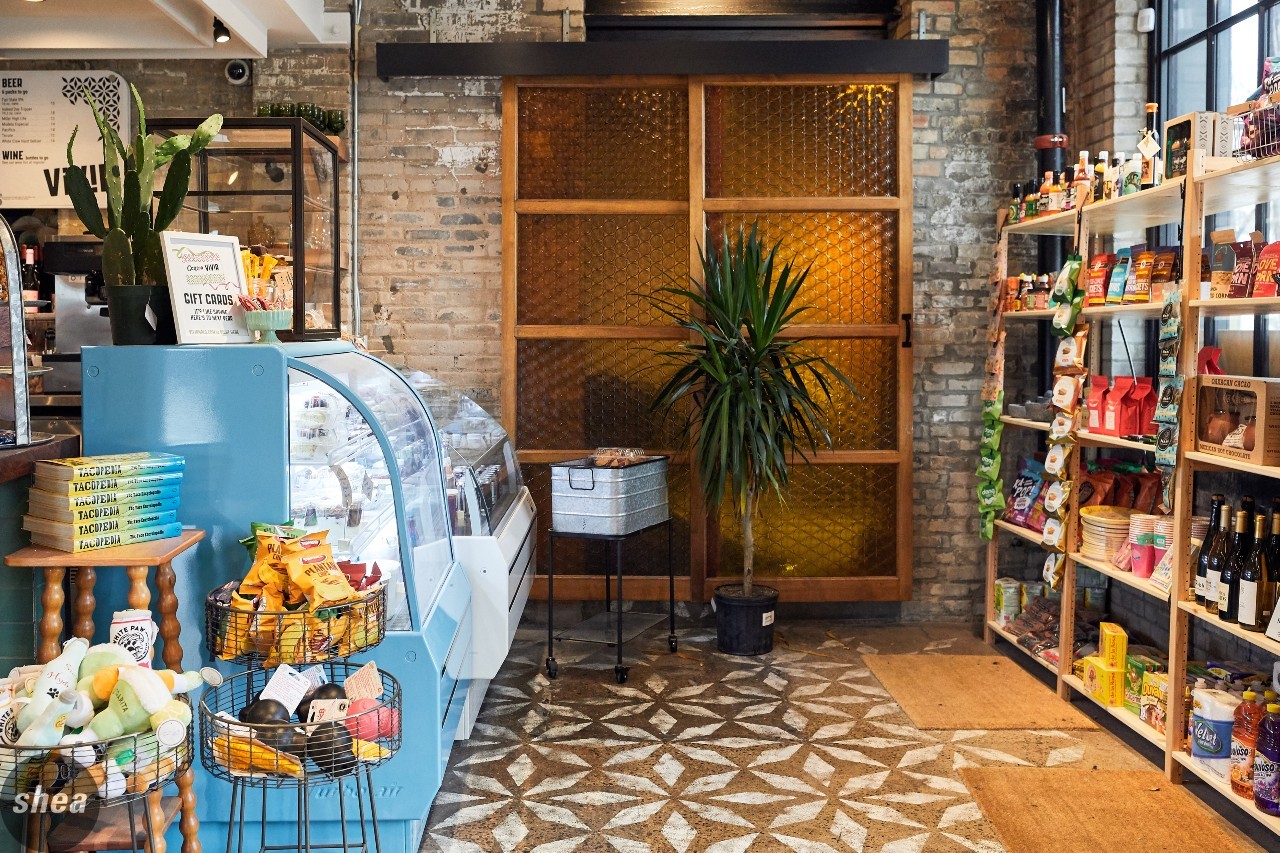 At Vivir, our team was not only able to reuse some of the former restaurant’s existing furniture in the design, but totally transformed a bakery case by cleverly using an auto-wrap company to give it a new blue hue. The Shea Makes team painted custom patterns on tables to bring pop, and created a functional design showpiece for the retail area with concrete breezeblocks and boxcar wood.
At Vivir, our team was not only able to reuse some of the former restaurant’s existing furniture in the design, but totally transformed a bakery case by cleverly using an auto-wrap company to give it a new blue hue. The Shea Makes team painted custom patterns on tables to bring pop, and created a functional design showpiece for the retail area with concrete breezeblocks and boxcar wood.
The design at famed Spoon and Stable in Minneapolis’ North Loop is an ideal study in reuse of found materials. Old ladders found from the restaurant’s basement, a custom art piece created from Chef Gavin Kaysen’s collection of spoons from restaurants around the world, and a chef’s bar made from salvaged wood from the community (with the zip code from its origin printed neatly at the corner) are all features that are integral to dining experience.
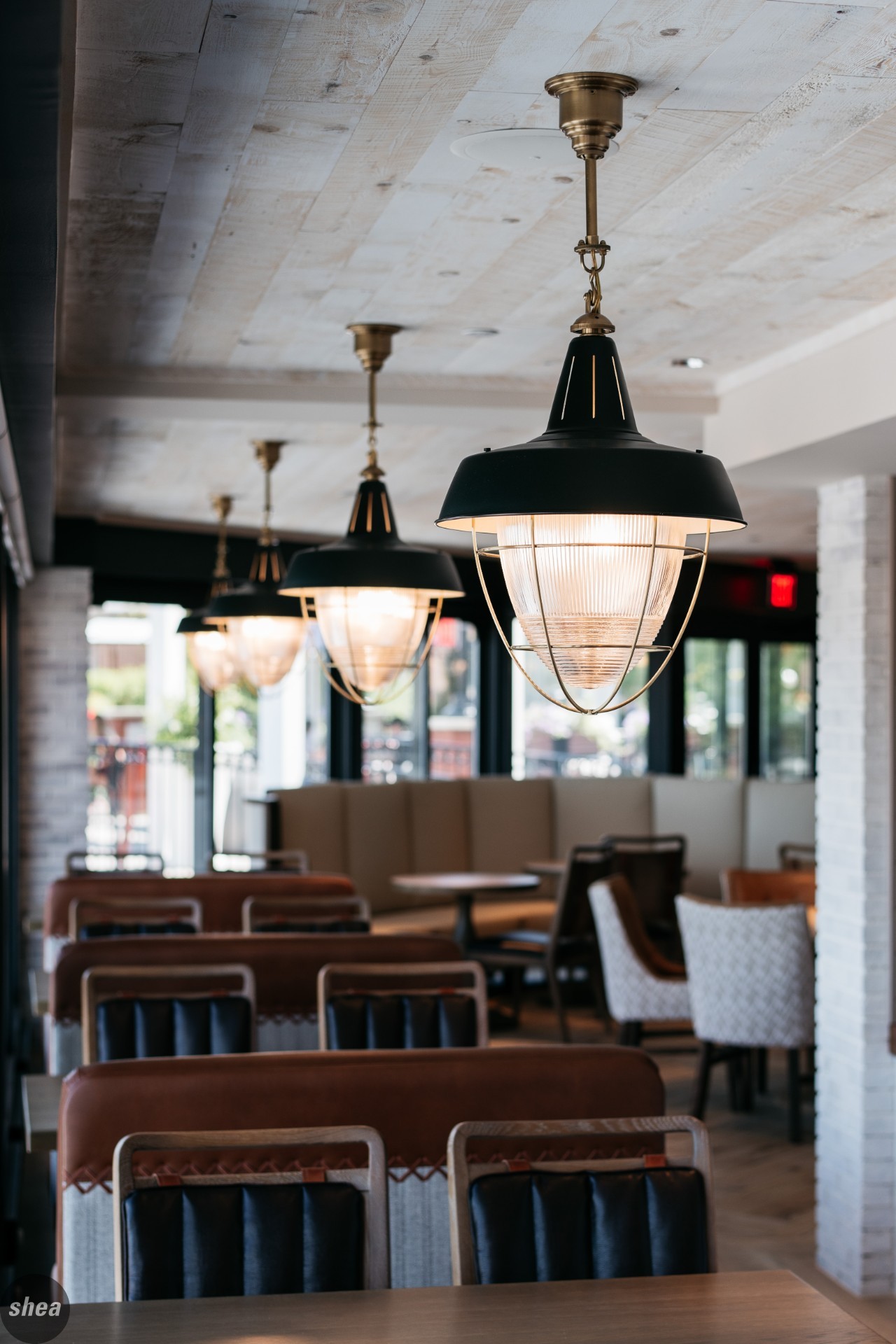 At Centro, Vivir’s next-door sister restaurant, pieces from architectural salvage makes a strong statement over the order counter, where we covered old doors in yellow Plexiglass to bring a cool translucent glow to the space. At the St. James Hotel, broken Red Wing pottery pieces were transformed into a community table and leather scraps from the Red Wing Shoe factory were worked into décor embellishments at Scarlet Kitchen & Bar, while oversize Red Wing pottery crocks are repurposed as bases for the side tables on the Veranda patio.
At Centro, Vivir’s next-door sister restaurant, pieces from architectural salvage makes a strong statement over the order counter, where we covered old doors in yellow Plexiglass to bring a cool translucent glow to the space. At the St. James Hotel, broken Red Wing pottery pieces were transformed into a community table and leather scraps from the Red Wing Shoe factory were worked into décor embellishments at Scarlet Kitchen & Bar, while oversize Red Wing pottery crocks are repurposed as bases for the side tables on the Veranda patio.
The design at 7th Street Truck Park in St. Paul was a total treasure hunt that resulted in our team repurposing everything from old beer cans (as chandeliers) to vintage license plates (now a retro-chic barfront) to actual vehicles (serving up all kinds of fun food). And in Shea’s own office downtown, we’ve not only highlighted the 1947 original terrazzo floors and fire-scarred brick walls, we reused neon letters from the iconic Shinder’s that once graced our building to create our beloved neon sign—showing off how we walk the walk when it comes to reusing and repurposing.
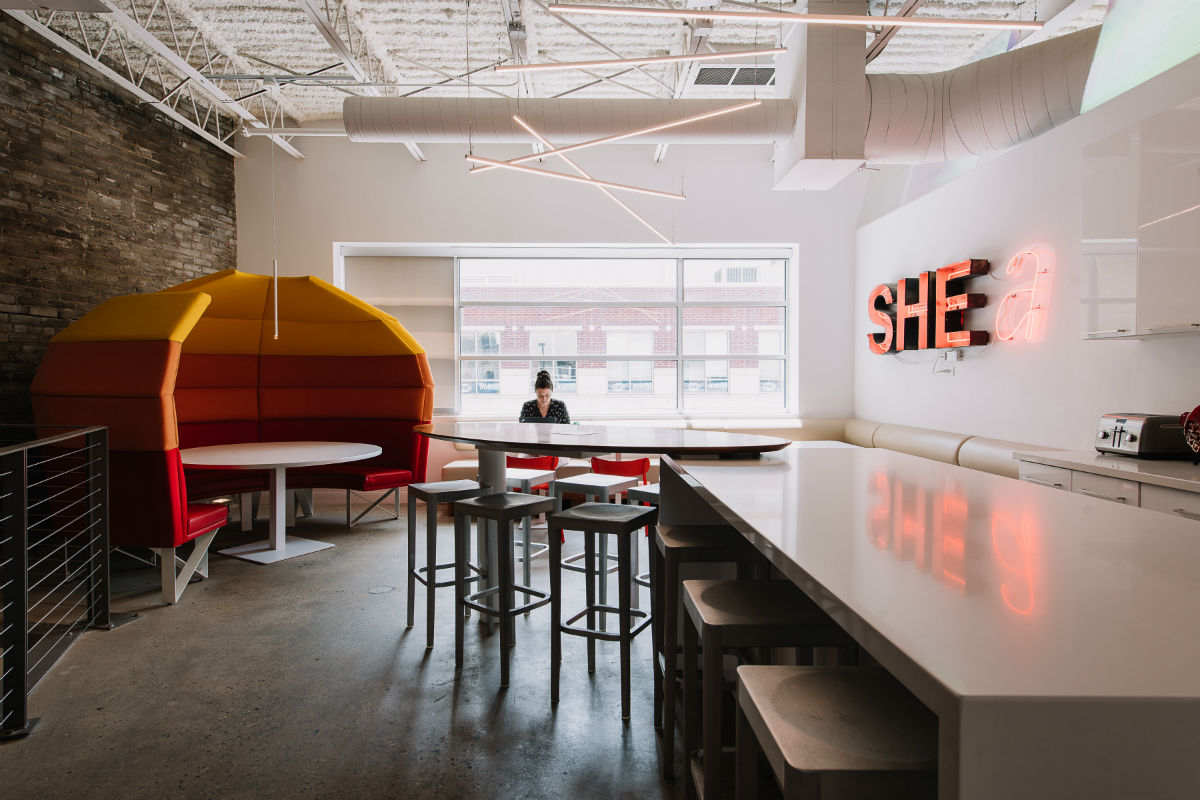 We never stop challenging ourselves at Shea to create unique, custom design solutions and features, and when we can do it in a way that reduces waste, reuses materials, and recycles the past, it’s a big win for our industry. Using history and found items effectively is not only a sustainable way to design, it can be a boon to the incorporation of a brand and differentiating a space to tie the whole concept together.
We never stop challenging ourselves at Shea to create unique, custom design solutions and features, and when we can do it in a way that reduces waste, reuses materials, and recycles the past, it’s a big win for our industry. Using history and found items effectively is not only a sustainable way to design, it can be a boon to the incorporation of a brand and differentiating a space to tie the whole concept together.


